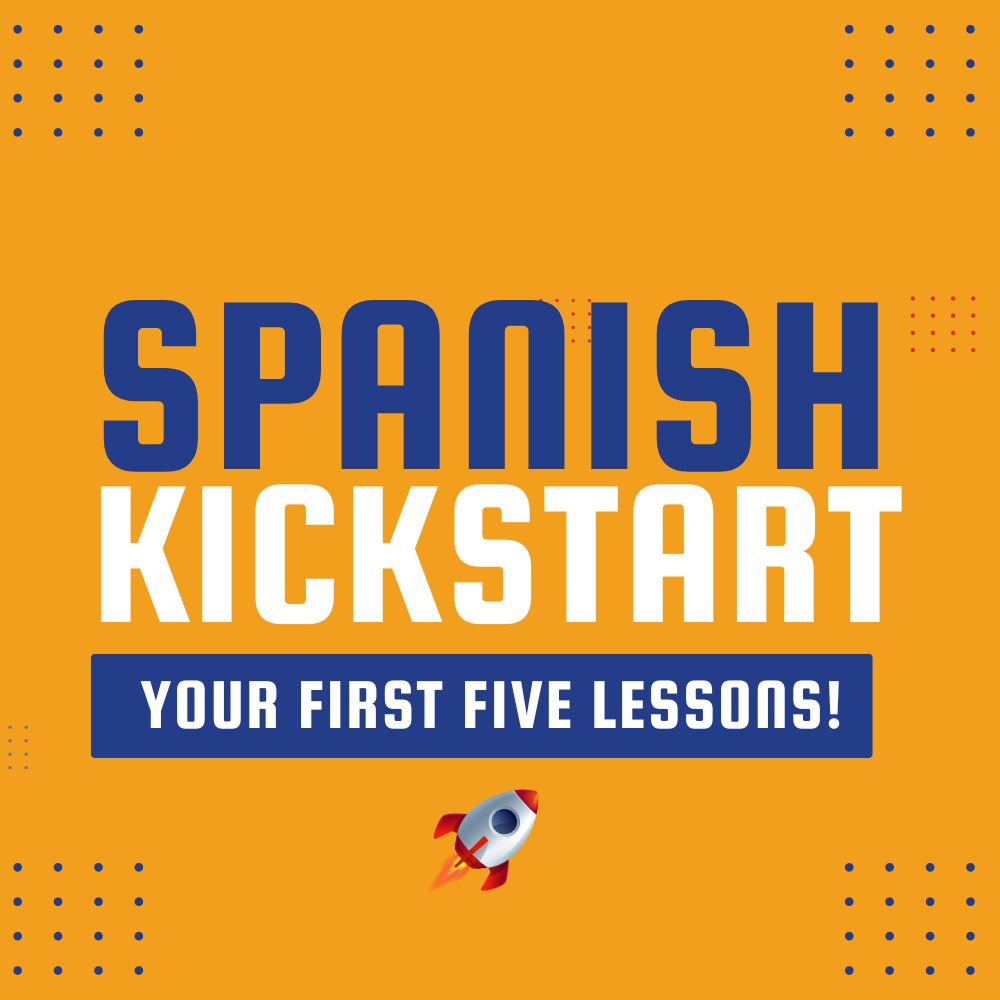If you’re learning Spanish, you’ve probably had some oops moments along the way.
Maybe you’ve said something that made native speakers smile—or even burst out laughing.
Don’t worry, it happens to everyone!
Learning a new language is all about trial and error. And today, I’ll help you avoid three super common mistakes that English speakers make when speaking español.
Ready? ¡Vamos!
GET our FREE 5-Day Spanish Course!

Ready to start learning Spanish but not sure where to begin?
Subscribe to Latin ELE’s newsletter and get access to Spanish Kickstart—a 5-day course with videos, study guides, and daily tips to help you start strong.
Unsubscribe anytime. No hard feelings
Common Mistakes by English Speakers in Spanish
Mistake #1: Me llamo es
When learning to introduce themselves, many English speakers struggle with how to use the verb “llamarse.”
For “my name is,” they tend to say “me llamo es”, trying to imitate the English structure “my name is” word for word.
But that’s not correct.
“Llamarse” is the verb we use to talk about our names, but it works differently than in English.
Roughly translated, it means “to call oneself.”
So, to say “My name is Marco” in Spanish, you say:


That’s like saying “I call myself is Marco.” Do you notice the extra word?
Easy fix: Just add your name after “me llamo”—no “es” needed!
Mistake #2: En mi ciudad son muchos edificios
This is a tricky mistake that many Spanish beginners don’t even notice.
In English, when mentioning the existence of things in a place, you say:
- There is a building.
- There are many buildings.
This structure requires the verb “to be.”
But in Spanish, we don’t use the verb “ser” (to be) for this. Instead, we use the verb “haber”, in the form “hay.”
The good news? “Hay” doesn’t change for singular or plural!




Easy fix: Always use “hay”, not “es/son,” when talking about the existence of something.
Mistake #3: Soy un doctor
English speakers naturally say “I am a doctor”, so they try to translate it as “Soy un doctor” in Spanish.
But in Spanish, we don’t use “un/una” when talking about professions!


Easy fix: Just drop “un/una”!
- Soy profesor. (I’m a teacher.)
- Mi hermana es ingeniera. (My sister is an engineer.)
False Friends
False cognates, also known as false friends, cause a lot of errores for Spanish learners.
Simply put, a false friend is a word that looks and sounds similar in two languages but has a different meaning.
For example: “Embarazada”
It looks like “embarrassed,” but surprise! It actually means “pregnant.”
Want to learn more about these tricky words? Check out this episode
I hope this lesson helps you avoid common mistakes made by English speakers and have fun while learning Spanish!
Making mistakes is normal—and they’re great learning opportunities. So don’t feel ashamed when it happens!
The important thing is to learn from them and keep practicing to improve your español.
And if you want more practice, Latin ELE has podcasts, videos, and resources to help you on your Spanish adventure.
¡Hasta pronto!

Marco Fierro — Spanish Beginner Cult Leader
¡Hola! I’m an enthusiastic Spanish teacher passionate about making my language accessible to YOU.
When I’m not teaching, I love traveling and rocking out on my electric guitar.
Book an online lesson with me and let’s get started. ¡Vamos!






 Peru is full of wonders beyond Machu Picchu! In this episode of Basic Spanish Conversations Podcast (Upper-Beginner Spanish), we
Peru is full of wonders beyond Machu Picchu! In this episode of Basic Spanish Conversations Podcast (Upper-Beginner Spanish), we